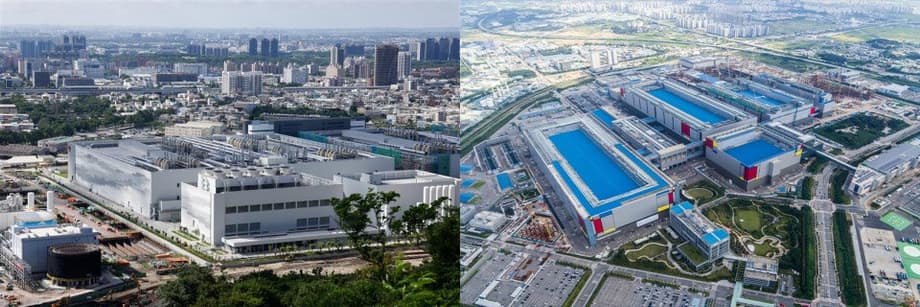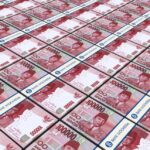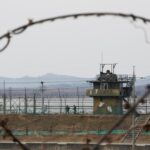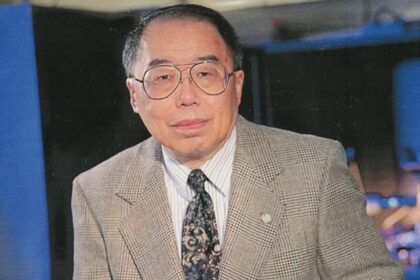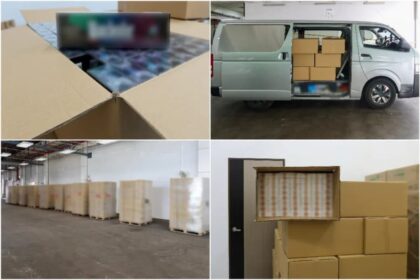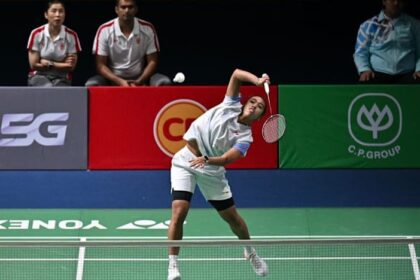AI demand reshapes two chip powerhouses
AI fever across the world is lifting demand for the most advanced chips. That surge is pushing Taiwan to the front of Asia’s growth league while South Korea slows, despite both being chip champions. The Asian Development Bank projects Taiwan will expand by about 5.1 percent this year as semiconductor exports jump. South Korea is seen near 0.8 percent, a full step behind, even as Samsung Electronics and SK hynix post profit recoveries. The divergence reflects different economic structures, policy choices, and exposure to tariffs, rather than a simple scorecard of which firms sell more chips. AI systems from data centers to smartphones require both cutting edge logic processors and large memory, lifting orders across foundry and memory segments.
Taiwan’s export engine has shifted into high gear. In August, the island’s shipments rose roughly 34 percent from a year earlier to a record near 58.5 billion dollars, edging past South Korea’s 58.4 billion dollars for the month. Forecasts also point to a symbolic crossover in living standards. Taiwan’s gross domestic product per person is expected to top 38,000 dollars, surpassing South Korea for the first time in more than two decades. South Korea still has a much larger economy in total output, yet a run of weak growth would narrow that gap.
Chips are a bigger slice of Taiwan’s economy and trade basket. Recent estimates suggest the semiconductor sector makes up about 22 percent of Taiwan’s GDP, more than double South Korea’s roughly 10 percent. On the export side, integrated circuits account for about one third of Taiwan’s shipments, compared with roughly one fifth for South Korea. That concentration has amplified Taiwan’s gains from the artificial intelligence build out, while South Korea’s broader industry mix has left it more exposed to slowdowns and tariff headwinds in autos, steel, and petrochemicals.
Why is Taiwan pulling ahead?
The world’s AI expansion runs on Taiwan’s foundry leadership. Taiwan Semiconductor Manufacturing Company fabricates the bulk of the most advanced logic chips used by leading US designers of AI processors and smartphones. The island’s semiconductor industry sits at the center of a dense cluster in and around Hsinchu Science Park, where talent, suppliers, tool vendors, and logistics operate in tight coordination. That ecosystem cuts costs, raises yields, and speeds time to market. Over recent years, Taiwan strengthened tax credits for research, equipment, and talent retention, and set aside billions of dollars through 2033 to keep leading edge capacity and packaging onshore. During a severe drought, authorities prioritized water for fabs to prevent line stoppages, underscoring how national policy has aligned with the sector’s needs.
Demand is surging in the right places for Taiwan. The island’s exports to the United States have soared as cloud companies and device makers ramp orders for AI related semiconductors and electronics. Monthly shipments to the US have jumped by more than 60 percent at times this year, contributing to record export totals. Taiwan’s chip equipment purchases have run ahead of South Korea’s in recent quarters, a sign of robust capacity expansion in advanced logic and high value packaging. Industry trackers show Taiwan’s share in global contract manufacturing of chips above 60 percent, and its share of the most advanced logic nodes near 90 percent or more. The global market for AI chips is projected to grow around 20 percent annually in the near term, while the broader semiconductor market is expected to expand closer to the high single digits. Taiwan’s positioning at the cutting edge captures a larger piece of that faster growth.
Why South Korea’s growth is muted despite a chip rebound
South Korean chipmakers are recovering from a deep memory downturn. Prices for both DRAM and NAND stabilized and then climbed as AI training and inference require huge pools of fast memory. SK hynix has benefited from high bandwidth memory demand tied to AI accelerators. Samsung is pushing new nodes in DRAM and ramping its foundry business for advanced logic. Those gains, however, sit alongside pressure elsewhere in the economy. Autos, steel, and parts face higher tariffs in major markets. Energy intensive industries are contending with cost swings and regulatory changes in multiple regions. The result is that chip profits have not translated into a broad economic lift.
Policy design also differs. South Korea passed a wide ranging package to back semiconductors, but it extended benefits to a broader set of strategic industries in a bid for balanced growth. Companies and economists argue the focus and speed of support still lag Taiwan’s. Debates continue around flexible work rules for fabs, relief from workweek caps for critical projects, faster permitting, and streamlined incentives for capital spending, power, and water. South Korea has announced a long horizon plan to build a mega cluster of chip capacity and suppliers by the 2040s, with large public and private investment. That strategy can pay off, yet scaling plants, talent pipelines, electricity supply, and reservoir capacity takes years. Near term, tariff exposure across autos and materials is weighing on export momentum. Year to date, South Korean exports are only modestly higher, with chips and cars up but steel and petroleum down.
Export dynamics and tariff pressure
Tariff policy has created asymmetric stress. Many chip products remain largely outside the tightest tariff nets because importing economies seek to avoid harming their own tech sectors. Traditional industrial goods are treated differently. Taiwan’s shipments to the United States have climbed strongly on AI related orders, while South Korea has seen declines in key categories such as car parts and steel where duties increased. In one recent month, Taiwan’s exports rose by about one third year on year to roughly 58.5 billion dollars, while South Korea’s inched up just over 1 percent to 58.4 billion dollars. Steel exports from South Korea to the US were hit with steep duties, and auto shipments softened. Taiwan, by contrast, has ridden a wave of electronics demand, and its expanding trade surplus with the US reflects that shift. Economists warn that large bilateral imbalances can draw attention, yet chips’ strategic status has, for now, kept many products off new tariff lists.
Structural differences in the chip mix
Two profiles dominate the sector. Taiwan leads in contract manufacturing of advanced logic chips, the brains of AI systems and smartphones. South Korea leads in memory, the data stores that feed those processors. The AI cycle today is tilted toward leading edge logic, advanced packaging that stacks logic with high bandwidth memory, and power efficient process nodes. That gives an edge to Taiwan’s foundry and packaging firms, while also lifting Korean memory suppliers. The logic versus memory difference shapes the macro story. Memory markets tend to swing more sharply with inventory cycles, which can whipsaw profit and investment. Foundry orders for cutting edge logic tied to multi year AI roadmaps can be steadier.
Scale and clustering also matter. Taiwan’s ecosystem integrates materials, tools, packaging, testing, and design support within short distances of flagship fabs. US chip designers rely on that capability to hit aggressive launch schedules. Concentration has limits. Power and water profiles must expand to support new plants, and siting challenges grow as nodes shrink. Analysts caution that the AI build out requires significant new electricity generation and grid upgrades. Taiwan and South Korea both face timelines to deliver that capacity. Taiwan’s choice to prioritize water and power for semiconductor operations during dry spells and peak demand periods signals the state’s approach to preserving a national advantage. South Korea is similarly moving to secure long term energy and water for chip clusters, while pushing training programs to address talent gaps in process engineering and equipment maintenance.
Risks and resilience
High concentration of advanced chip capacity in Taiwan carries geopolitical and economic risk. Conflict across the Taiwan Strait would trigger severe disruption. Economists have modeled extreme outcomes in which a full scale confrontation pushes global losses toward ten trillion dollars, and a blockade scenario produces multi trillion dollar damage. The world’s dependence is stark. Taiwan fabricates the majority of the most advanced logic capacity, and its leading foundry holds a dominant share of contract manufacturing. Even if friendly governments fund more plants, replicating Taiwan’s efficiency, talent depth, and supplier density is hard in the near term.
Reshoring and friendshoring are accelerating. The United States, Europe, Japan, and South Korea have rolled out subsidy programs and tax credits to bring more fabrication, packaging, and materials onshore. Many projects are underway, from Arizona and New York to Kyushu and Dresden. The ramp takes time, and cost and labor constraints remain. Taiwan’s firms are participating in these efforts, building some capacity overseas to widen geographic spread, yet the most advanced production remains centered on the island. Analysts expect that balance to hold for several years.
Rapid growth creates social and fiscal pressures as well. In Taiwan, ICT and semiconductor wages have risen faster than pay in other sectors, widening income gaps. A housing squeeze in tech hubs like Hsinchu raises living costs for non tech workers. Local evidence even points to a mild baby bump among well paid tech families, while affordability challenges deter others from starting families. Inflation has softened real wage gains in some periods, and household debt is high relative to output. South Korea faces its own demographic and affordability pressures, coupled with a broad cost of living challenge in major cities. Managing growth quality alongside growth quantity is becoming as important as adding fabs and exports.
What can each economy do next
South Korea can put the chip rebound to work by removing bottlenecks and diversifying strength. Industry executives have asked for flexible work arrangements and targeted exemptions from workweek caps for time critical fab projects. Faster permitting for power lines, substations, and water infrastructure would align with capacity schedules. Clear, stable tax credits for leading edge nodes and advanced packaging can encourage domestic foundry expansion to complement world class memory. Beyond semiconductors, policy can back higher value autos and batteries, low carbon steel, and digital services to spread export risk. Trade diplomacy to ease tariff friction in autos and materials would help. Skills training for equipment technicians and process engineers can narrow labor gaps that often slow ramps. A mega cluster strategy will need to be matched by timely energy and water delivery, and by streamlined local approvals.
Taiwan’s priority is to lock in its lead while broadening the base of growth. Water recycling, power reliability, and talent pipelines are strategic needs as AI demand raises capacity requirements. Keeping advanced nodes at home will require steady investment support and predictable policy. Diversifying some packaging and mature node work to allied markets can reduce concentration risk while preserving core leadership. Financial stability is another pillar. Managing currency swings that inflate GDP per capita, as well as housing affordability in Hsinchu and Taipei, will matter for inclusive growth. Continued participation in supply chain partnerships with the United States, Japan, and Europe will help maintain access to critical tools and markets. A measured expansion of free trade agreements could support sectors outside semiconductors that have struggled to compete on price alone.
The Bottom Line
- Taiwan’s 2025 growth is projected near 5.1 percent, while South Korea is near 0.8 percent.
- Taiwan’s exports topped South Korea’s on a monthly basis in August, reaching about 58.5 billion dollars.
- Taiwan’s GDP per capita is set to surpass South Korea’s for the first time in roughly 22 years.
- Semiconductors are about 22 percent of Taiwan’s GDP and about 10 percent of South Korea’s, shaping the macro impact of the AI cycle.
- Chips are roughly one third of Taiwan’s exports and about one fifth of South Korea’s exports.
- US tariffs have weighed on South Korean autos and steel, while many chip products remain outside the tightest tariff nets.
- Taiwan leads in advanced logic and packaging, South Korea leads in memory, and both face power and water scaling challenges.
- Global efforts to add capacity outside Taiwan are growing, yet the island remains the critical node for the most advanced chips in the near term.


